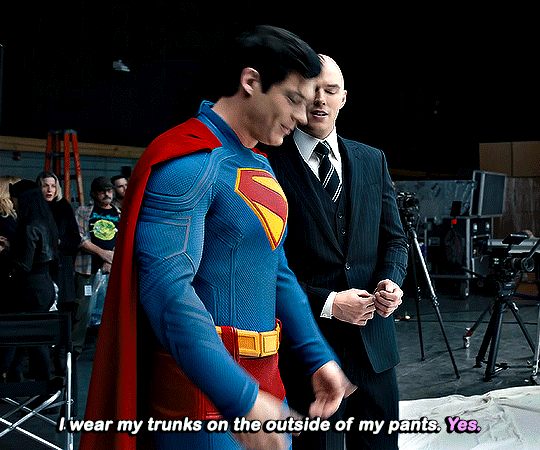Text
Flawed but fuck it suck a breath of flesh air. Sol top 5 jedi.

a year too late but I finally watched The Acolyte
577 notes
·
View notes
Text
George Miller is our greatest living world builder and I'd die on that hill
7 notes
·
View notes
Text
Bob's burgers is family guy for people who have anxiety
7 notes
·
View notes
Text
My whitest opinion is that Neil Cicierega would be a killer rap producer if someone let him
My even whiter (and maler) one would be that he'd work well with jpegmafia
#neil cicierega#rap music#forgive me god i'm sorry for this take but like you heard wow wow lately#it's memecore but it's a really great beat
0 notes
Text
I don't appreciate how much Liz lemon dressed as Jackie Kennedy does it for me.
1 note
·
View note
Text
Bros will say they miss when movies weren't woke but that Sgt Kabukiman Nypd ain't cinema
#filmbros#troma films#these guys are lame#anti woke#I mean kabukiman is kinda woke but also horribly offensive... troma is its own political spectrum#It's this culture of wanting to pretend they are subversive and sick of politics and echo chambers#but the reality is what they really want is to be coddled#they want movies to be 'uncompromised' but have no interest in cult cinema#movies#lameos#cult film
0 notes
Text
He's such a cutie I can't... ❤️💙


#He's the perfect superman
#superman 2025#superman#david corenswet#both horny and cooing jesus christ#superman is a big strong fella but he's also a kindhearted cutie!!!#love him
4K notes
·
View notes
Text


Was insufferable on the net today but jesus christ I've not spent my entire life learning about how miyazaki is one of the best (and honestly dissapointingly shitty as a person) to ever do it for people to say ai of his work would make him happy
#studio ghibli#hayao miyazaki#ai assholes#asian cinema#akira kurosawa#i'm sick of these illiterate fucks#READ#WATCH MOVIES#Its not hard!!!
6 notes
·
View notes
Text
some of you haven’t gone back to those gold soundz and it shows
14 notes
·
View notes
Text
some of you haven’t gone back to those gold soundz and it shows
14 notes
·
View notes
Text
The perfect formula for a simpsons game exists it's called yakuza 0
#the simpsons#yakuza#flanders would be the Majima Everywhere equivalent ofc#side stories would be a really good way to bring everyone in#including if they stick to the yakuza style posthumous ones
1 note
·
View note
Text
Holy shit what movies are these? Cause I have to watch every single one of them right now
There's a specific type of guy online who thinks all asian cinema is wong kar-wai and godzilla minus one and it bugs me because it leads to claims like 'asian cinema is more grounded and earthly' and, oh yeah, my favourite grounded and earthly film, Ricki-Oh: The Story of Ricky
12 notes
·
View notes
Text
There's a specific type of guy online who thinks all asian cinema is wong kar-wai and godzilla minus one and it bugs me because it leads to claims like 'asian cinema is more grounded and earthly' and, oh yeah, my favourite grounded and earthly film, Ricki-Oh: The Story of Ricky
12 notes
·
View notes
Text
What I love about tmbg is their sneaky jazz chords
20 notes
·
View notes
Text
y'know how in some anime they'll have a random beach episode that has no significance to the main plot between story arcs. you could say hellblazer also did that except instead of characters having fun it's about john getting radiation poisoning and fathering a two-headed seal baby with the last woman on earth and watching it immediately get eaten by seagulls during its first minute alive
228 notes
·
View notes
Text
Imagine, the year is 2006, you're in your mid 20s, just out of uni on your first major job, a CGI artist on Transformers, your favourite show as a kid, renowned for its simple but unique character designs, and also being a glorified toy commercial. You tirelessly begin to design your favourite robots, making them fit into a realistic setting, but also maintaining the same boxy charm, the movie's being filmed in a couple months and you've had no word from the people at Paramount about the look of the movie, only the summer 2007 release date and it being directed by Michael Bay.
Then, during a particularly long day, whilst putting the finishing touches on pre-vis for Ratchet in your cubicle, you hear a shrill, abrasive voice go: 'Nice job.' You turn around. There, smoking a cigar, his dirty-blond dye-job blowing in the non-existent wind. His breath smells like coffee and napalm: it's him. Mikey Bay. he leans over your shoulder and points at your design.
You shudder at the slight of his button-down shirt, about the same colour and texture as a coffee stain. He slowly takes off his reflective sunglasses and looks you dead in the eyes. He stares intensely with his beady little eyes.
'But what if it looked like a bunch of junkyard scrap fucked?'
4 notes
·
View notes
Text
Jermaine Clement was made to be a main human in a muppet movie and it's embarrassing it hadn't happened yet
4 notes
·
View notes